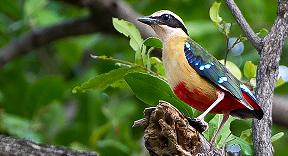
Pitta angolensis
TAXONOMY
Pitta angolensis Vieillot, 1816, Angola. Three subspecies recognized.
OTHER COMMON NAMES
English: Angolan pitta; French: Brиve d’Angola; German: Angolapitta;
Spanish: Pita Africana.
PHYSICAL CHARACTERISTICS
6.7–8.7 in (17–22 cm); 1.6–3.5 oz (45–98 g). Black head with
yellow stripe on side. Whitish under bill to yellow at breast
and red under tail. Back and wings are green, with blue and
black banding on wings. black tail, and blue on upper tail.
DISTRIBUTION
P. a. longipennis: migratory; breeds in central Tanzania, Malawi,
southeast Democratic Republic of Congo, eastern Zambia,
Zimbabwe, and possibly into northern South Africa; nonbreeding
migrant in northern Tanzania, Rwanda, Burundi, Democratic
Republic of Congo, Central African Republic, Uganda,
and coastal Kenya. P. a. pulih: West Africa; resident in Sierra
Leone lowlands, Ghana, Liberia, Ivory Coast, Nigeria, and
coastal Cameroon. P. a. angolensis: West Africa; southern
Cameroon, Guinea, Congo, Democratic Republic of Congo,
and Angola
HABITAT
Evergreen bush, forest-like thickets along watercourses, and
secondary forest; also in tall semi-deciduous and evergreen
rainforest; from sea level up to 4,100 ft (1,250 m).
BEHAVIOR
Primarily terrestrial, occurring alone or, especially on breeding
grounds, in pairs. Hops rapidly along ground to forage and often
flies only a short distance if disturbed before dropping back
to the forest floor. Territorial, often singing from the ground
or low perch.
FEEDING ECOLOGY AND DIET
Foraging birds stand motionless watching for prey, then hop to
a new spot to continue scanning. Periods of scanning are often
followed by the pursuit of insects or other invertebrates among
the leaf-litter of the forest floor. Food items include ants, termites,
beetles, insect larvae, slugs, snails, millipedes, caterpillars,
and earthworms.
REPRODUCTIVE BIOLOGY
Appears to breed during the wet season. Nest is an untidy
dome, placed 7–26 ft (2–8 m) above the ground, often protected
by thorns. Constructed from roots, sticks, twigs, dried
leaves, rootlets, and fine fibers. Clutch size usually three, but
ranges from one to four. Eggs creamy-white, sometimes greenish
or pinkish, with reddish brown and purplish spots and lines
over gray-lilac markings, most numerous on widest end.
CONSERVATION STATUS
Not threatened. Common, especially in breeding range of East
Africa, but deforestation is probably contributing to habitat
loss and reductions in populations.
SIGNIFICANCE TO HUMANS
None known.
Other popular Animals
Photo Gallery of - African pitta
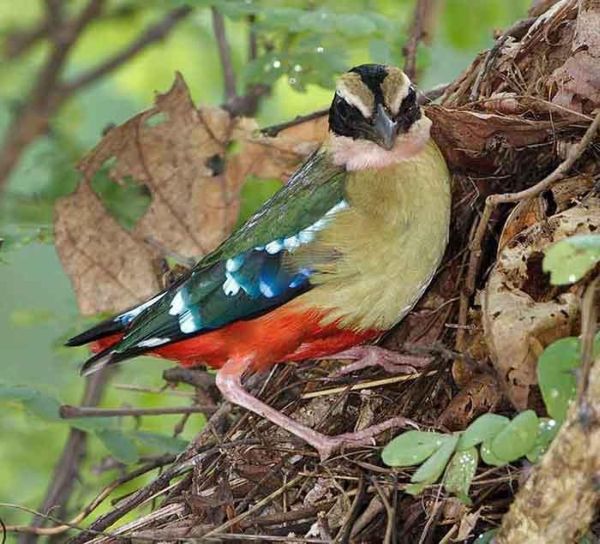
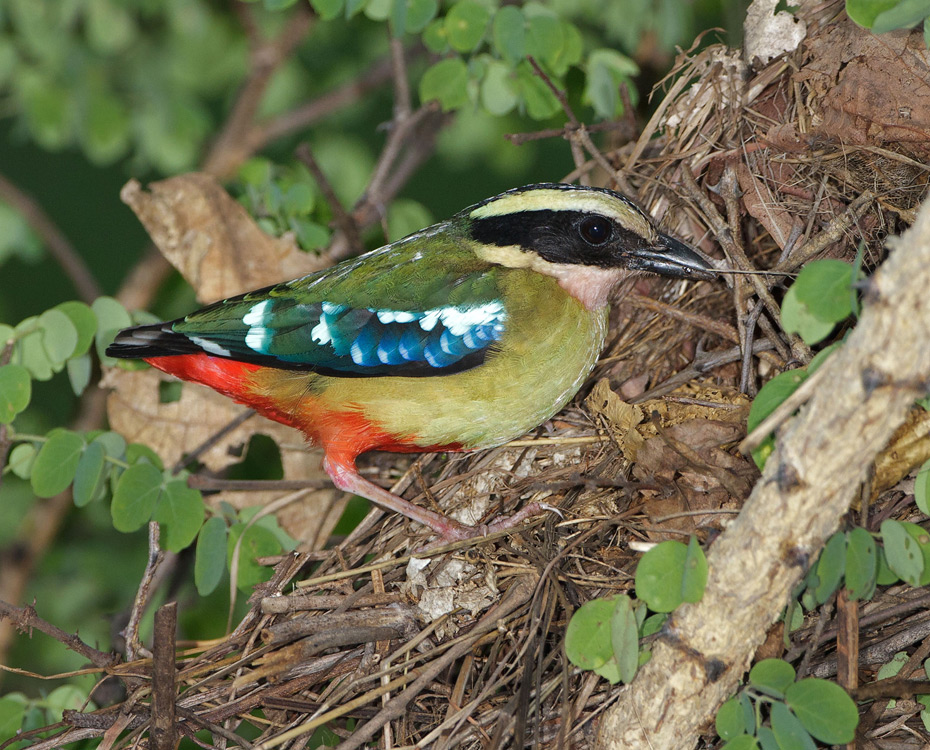
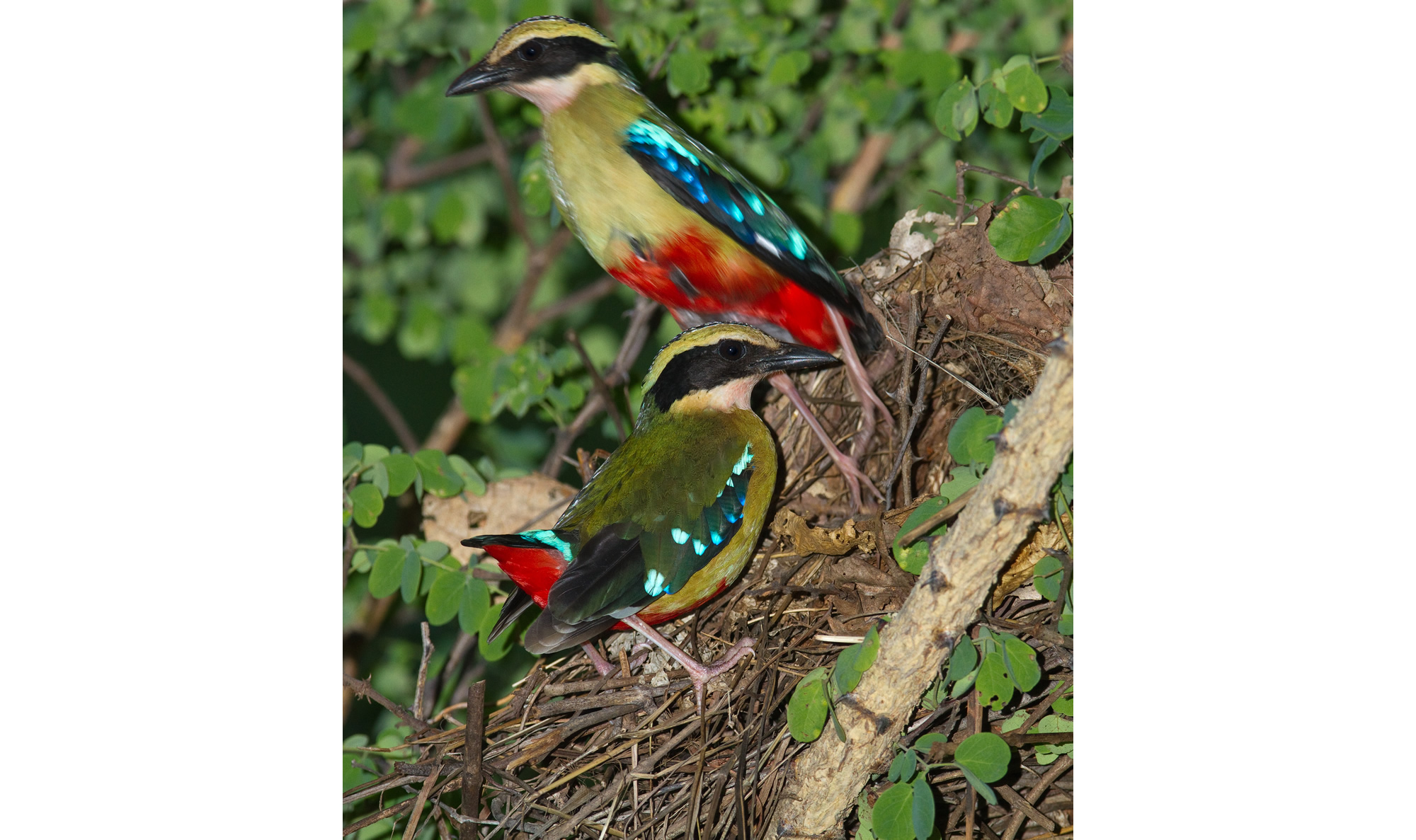
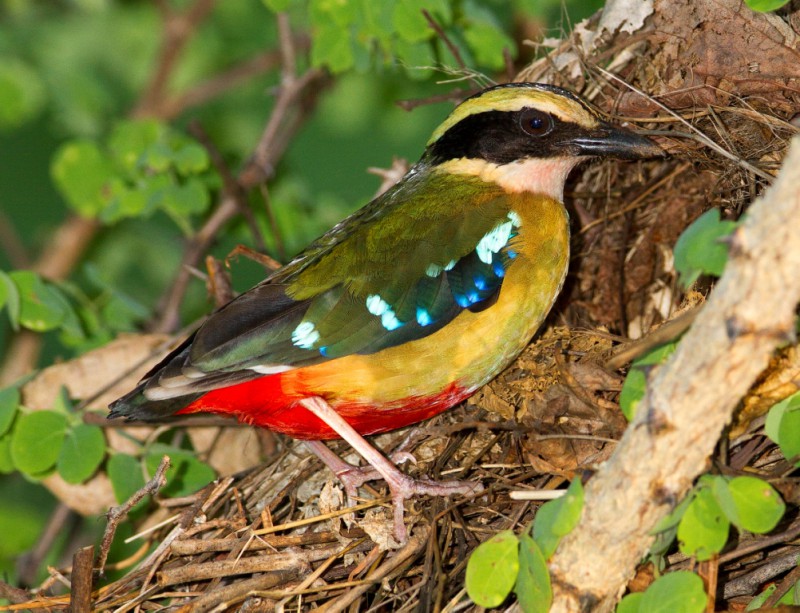
 Animalia Life
Animalia Life